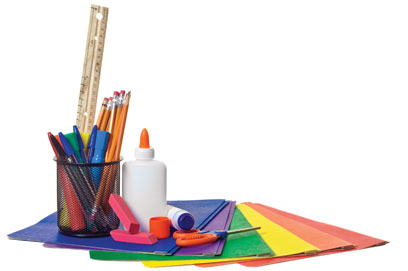 As the lazy days of summer wind down and back-to-school sales start popping up, parents are bracing for the fall onslaught of homework, soccer practice, scout meetings, art classes, chess tournaments, religious or cultural activities and more. And while opportunities abound to enrich children’s lives, too many commitments can become stressful for everyone, especially parents who carpool madly from one after-school activity to the next, packing up (or sometimes forgetting) cleats, tutus or water bottles and then careening home to walk the dog and throw dinner in the oven before shuttling everyone back home for a meal and homework time.
As the lazy days of summer wind down and back-to-school sales start popping up, parents are bracing for the fall onslaught of homework, soccer practice, scout meetings, art classes, chess tournaments, religious or cultural activities and more. And while opportunities abound to enrich children’s lives, too many commitments can become stressful for everyone, especially parents who carpool madly from one after-school activity to the next, packing up (or sometimes forgetting) cleats, tutus or water bottles and then careening home to walk the dog and throw dinner in the oven before shuttling everyone back home for a meal and homework time.
To take “back to stress” out of “back to school,” think about signing up for one less activity per child and set up a few simple systems to organize your comings and goings.
The overscheduled family
Does your 8-year-old really need to play on the soccer team that practices across town during rush hour? Ramona Creel, an organizing consultant and simplicity coach who won the award for “Most Valuable Educational Resource” at the 2008 and 2009 Los Angeles Organizing Awards, suggests weighing each activity your child is signed up for, the time it takes away from family dinners, and its expense and driving distance against the skills and enjoyment your child is gaining from participating.
Discussing your family’s values — and which activities most closely match those values — can help you decide which activities you might jettison to gain more unstructured family time. Sue Hauck, a Seattle mother of two, says she and her husband agree that sports and spending time outdoors are important to a healthy lifestyle, so their son and daughter, who are entering fourth and sixth grades, respectively, this fall, play on local soccer teams and participate in scouting. She doesn’t sign her children up for many other activities, she says, because she’s noticed that they feel stressed if they don’t have enough unstructured time at home.
Once you’ve determined the right fit for out-of-school commitments for your family, get ready and get organized.
All systems go
Start the new family routine before school starts, advises Debbie Lillard, author of Absolutely Organize Your Family: Simple Solutions to Control Clutter, Schedules & Spaces. In the two weeks before the first day of school, set bedtimes closer and closer to the school routine. “Get everyone dressed and productive in the morning,” she says.
To gear up efficiently for the fall, Creel offers these tips: Go through children’s drawers, giving away clothes that are too small and making a list of necessary purchases. Sort out scissors, tape and other supplies at home, to make sure the school supply shopping trip doesn’t result in a surplus at home. Books that children have outgrown can be purged from bookshelves and donated.
When it comes to taming the chaos of “back to school,” working mom Janet Chung of Seattle says, “Organization is a coping mechanism.” She uses a color-coded calendar in her home office to provide visual cues for her elementary-school-age sons, Griffin and Nicholas, so they know if it’s a day for soccer, woodworking, chess or Spanish. To help mornings go more smoothly, Chung rewards the boys if they do all the things they need to do, such as brushing their teeth and clearing breakfast dishes, to be ready to head out the door. “They have come to realize how helpful they can be,” she says.
Get the kids involved
Along with laying out the next day’s clothes and putting all homework into their backpacks, children as young as 5 can pack their soccer or ballet bags as well. As kids take on this responsibility, it’s tempting for parents to bail them out when they forget a piece of equipment, says Lillard. She offers a three-strike method with her own children, delivering the missing item a few times. “I’m more lenient at the beginning of the year as the children are getting used to the new routines,” she says.
Creel offers a stricter approach, reasoning that after sitting out a class or practice once or twice for forgetting a martial arts uniform, tights or mouth guard, the child will become more conscientious. Hauck says she’ll bring the item if it is critical, like a baseball mitt on a game day, but if her children forget their water bottles, “They’ll have to be thirsty.” Parents can also sit down with their children to brainstorm strategies for how to remember everything.
When the school year begins, find a place for kids to stow backpacks, after-school sports equipment, other paraphernalia and papers when they walk in the door, says Lillard. A temporary inbox and outbox can keep all the back-to-school forms organized.
Whether your back-to-school planning involves color-coded charts, deciding which after-school activities really matter or just shopping from a list for school supplies, a little planning can go a long way to easing the transition to the new school year and reducing stress for the family.
Julie Weed is a Seattle-based freelance writer for The New York Times and others.
Back to school organizing tips
Clear out the clutter
Before school starts, spend a day organizing your child’s storage.
Help your kids let go of old toys and outdated interests.
Give away old clothes and shoes that don’t fit.
Do it “with” your kids and not “for” them.
Create a launching pad
Set up a spot near the door for items that need to go to school.
Spend 15 minutes each night gathering books, instruments, sports equipment and supplies for the next day.
Use a cubby for each kid, if you have several children.
Get ready ahead of time
Make lunches the night before to save time in the morning.
Pack nonperishables (juice box, chips, fruit) a week at a time in lunch bags marked with the child’s name and day; store in the pantry.
Morning rituals
Set an alarm clock, allowing plenty of time to get ready.
Simplify your morning routine as much as possible.
Make mornings fun with music, but stay away from TV distractions.
Have a set schedule: shower, dress, breakfast, chores, etc.
Put breakfast supplies within kids’ reach to make things easier.
Develop consequences for not being ready on time.
Put your schedule in order
Set up a central family calendar in a high-traffic area.
Record each person’s appointments in a different color marker.
Block off family time at least once a week.
Source: Excerpted from Ramona Creel’s website at ramonacreel.com









